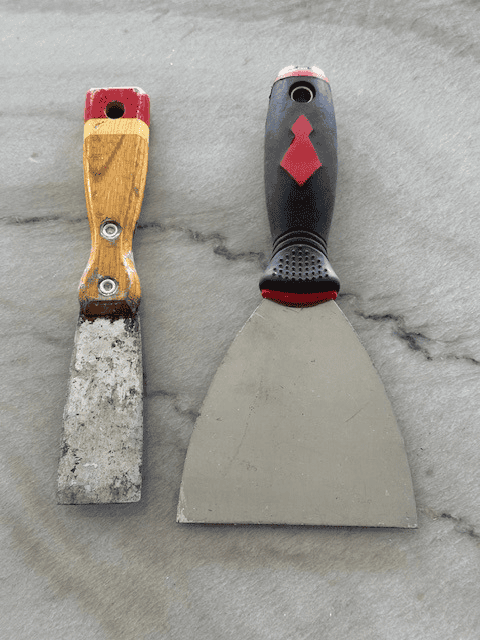A putty knife is a versatile hand tool used for scraping surfaces, applying and smoothing putty, plaster, or other fillers, and removing paint or wallpaper. It typically features a flat, flexible blade attached to a handle, which can be made of wood, plastic, or metal. Putty knives are essential for various home improvement and repair tasks, making them a staple in any DIY toolkit.
History
The putty knife has a rich history dating back to the early 19th century. Originally designed for glazing work, putty knives were used by glaziers to apply putty to window panes, securing the glass in place. Over time, the tool evolved, and its use expanded beyond glazing to include a wide range of applications in painting, drywall work, and general home repairs. The development of different blade materials and handle designs has enhanced the tool’s functionality and durability, making it a must-have for professionals and DIY enthusiasts alike.
Types of Putty Knives
- Standard Putty Knife: A basic tool for applying putty and scraping.
- Flexible Putty Knife: Features a more flexible blade for smoothing and finishing.
- Stiff Putty Knife: Has a rigid blade for scraping and removing tough materials.
- Taping Knife: Wider blade used for drywall taping and finishing.
- Joint Knife: Used for spreading joint compound on drywall seams.
- Multi-tool Putty Knife: Includes additional features such as nail pullers and screwdrivers.
Putty Knife Key Features
- Blade Material: Stainless steel, carbon steel, or plastic.
- Blade Width: Varies from narrow (1 inch) to wide (up to 6 inches).
- Handle Material: Wood, plastic, or rubberized grips.
- Flexibility: Flexible or stiff blades for different tasks.
- Edge: Smooth or serrated edges for various applications.
Choosing the Right Putty Knife
Selecting the right putty knife depends on the task at hand. For applying putty or filler, a flexible blade provides a smooth finish. For scraping old paint or wallpaper, a stiff blade is more effective. Consider the blade width based on the surface area you’ll be working on; narrower blades are ideal for small, detailed work, while wider blades cover more surface area quickly. Handle comfort is also crucial, especially for extended use, so choose a handle that fits well in your hand and offers a secure grip.
Recommendations
Proper Use and Techniques
Using a putty knife correctly can make your DIY projects easier and more efficient. When applying putty, hold the knife at a low angle to spread the material evenly. For scraping, use a higher angle to apply more pressure and effectively remove the old material. Keep the blade clean and free of debris to ensure a smooth application. Practice different techniques on a scrap surface to get comfortable with the tool before starting your main project.
Maintenance and Care
Maintaining your putty knife ensures its longevity and effectiveness. After each use, clean the blade thoroughly with a damp cloth to remove any residue. For tougher substances, use a solvent or mild detergent. Dry the blade completely to prevent rust, especially if it’s made of carbon steel. Store the putty knife in a dry place, preferably in a tool chest or toolbox, to protect it from damage and moisture.
Putty Knife Safety Tips
While putty knives are relatively safe to use, following some basic safety precautions can prevent accidents:
- Wear gloves to protect your hands from sharp edges and chemicals.
- Use the right type of putty knife for the task to avoid unnecessary force.
- Keep the blade away from your body to prevent cuts.
- Ensure the handle is secure and not damaged to avoid slipping.
Conclusion
A putty knife is an indispensable tool for any DIY enthusiast, offering versatility and ease of use for various home improvement tasks. Understanding the different types, choosing the right one, and using proper techniques will help you achieve professional results in your projects. With proper maintenance and safety measures, your putty knife will serve you well for many years.


